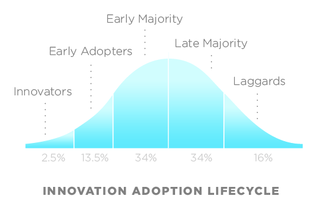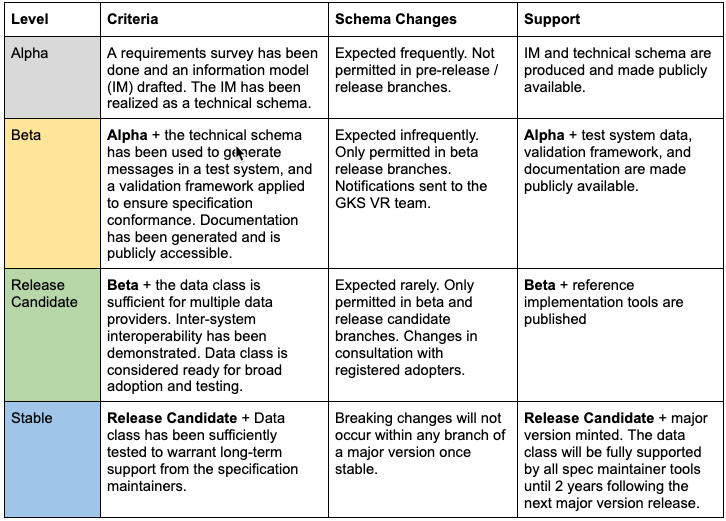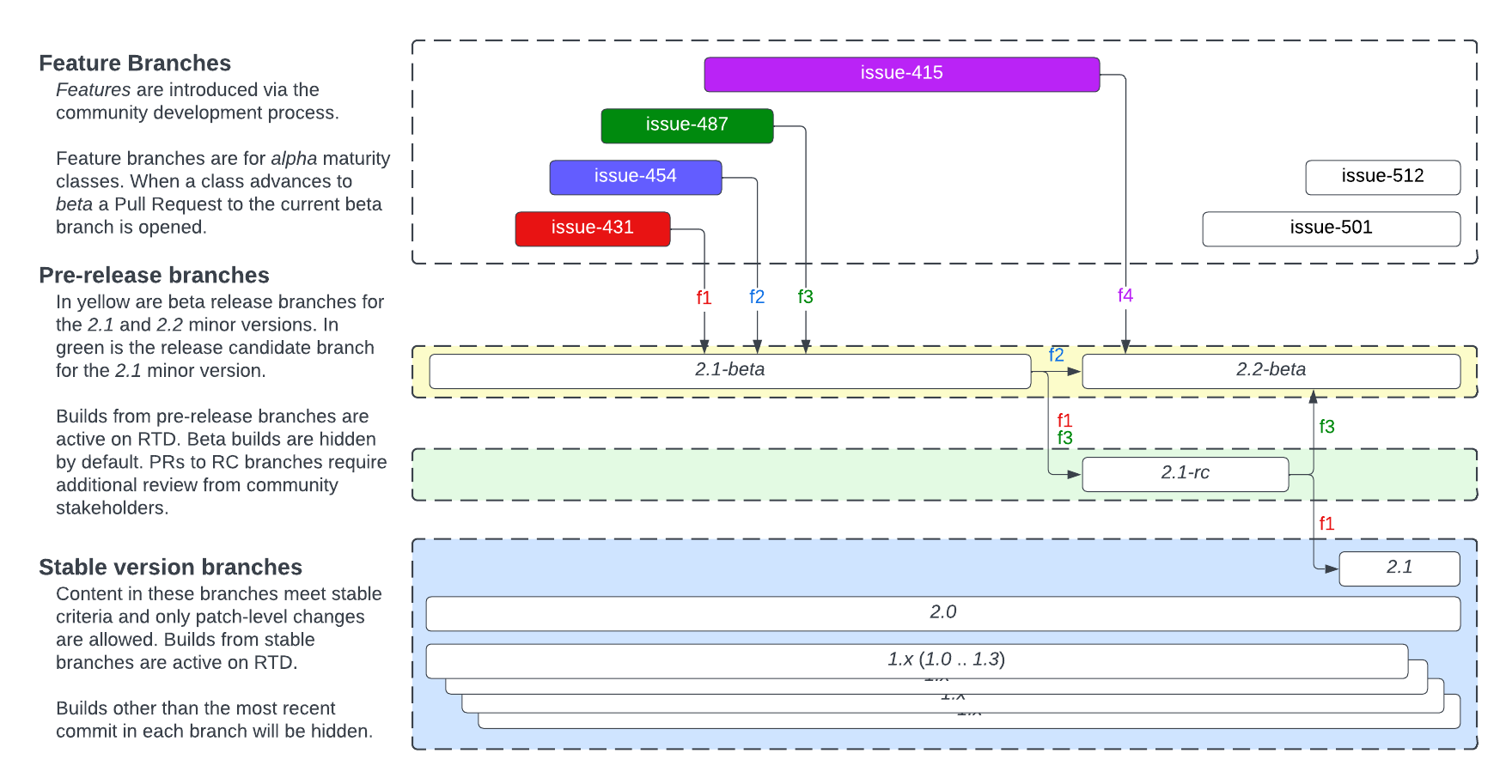Data Class Maturity Model and Versioning
The Genomic Knowledge Standards work stream is developing semantic data exchange standards for federated genomic knowledge sharing across multiple inter-related domains of genomic variants, sequence annotations, study results, and the framework that uses these data to make knowledge assertions. To address this, new models must be developed and iterated upon through across GKS community products. This creates a tension between the need to create stable data models while ensuring that models evolve to interoperate smoothly across a diverse set of stakeholders. Mechanisms for communicating the stability, uptake, and development of data classes are paramount to addressing this balance.
A maturity model is a useful mechanism for communicating the stability of a developing GKS data class. This is needed to help data producers at each stage of the adoption lifecycle (Figure 1) decide on the appropriate time to engage and implement data classes in their development and/or production systems. Data classes that have progressed through the maturity model should have an associated progression of support from the GKS specification maintainers for message generation, translation, and validation tooling.
The purpose of this document is to define a maturity model for communicating the stability and level of commitment supporting GKS data classes, with the goal of enabling timely specification adoption by the community.

The Innovation Adoption Lifecycle Adopters in every category along the innovation adoption lifecycle benefit from communication about the maturity of new data classes generated by the Genomic Knowledge Standards work stream. Communicating our outreach strategy should consider engagement with these different categories as a primary goal of the maturity model, enabling adopters to engage at a time that is appropriate for their needs.
Data Class Maturity Levels
Maturity level criteria

Data class maturity level criteria and commitments.
Maturity advancement process Maturity levels are to be reviewed and advanced by consensus among the specification leads, in consultation with the associated work group membership. Factors to be considered include the criteria specified in Data class maturity levels, the degree of adoption observed in the community, feedback provided by adopters, and availability of specification maintainers to provide the level of support required.
Communicating Maturity Level
Technical Documentation Primary documentation sites (e.g. vrs.ga4gh.org) will include pre-release builds (e.g. “2.1.0b3”; see Versioning). The RTD Latest branch will point to the most recent release or release candidate.
<Placeholder> a pre-release build on RTD figure:: images/maturity_levels.png
Addition of pre-release classes to VRS documentation at vrs.ga4gh.org
Legend An illustration of a pre-release build of VRS available in the version selection tool.
Inclusion of the Release Candidate Classes on the specification page provides a mechanism for early adopters (Figure 1) to look at upcoming data classes that have already met the bar for interoperable data exchange and the associated set of supporting tools for a data class at Release Candidate maturity (Table 1).
Versioning
Versions are ascribed to releases of specifications, not to individual data classes. It is expected that the maturity of all classes will be at a level greater than or equal to the release level (i.e. a beta release MAY include beta, rc, and stable maturity classes, but no alpha maturity classes).
Developing features is intrinsically linked to policy surrounding major and minor versions, which follow semantic versioning v2 (semver.org) practices for API versioning. Version syntax follows PEP 440. A major or minor version is considered stable once it is released. A major or minor version may have pre-release drafts at the beta and release candidate levels. When referring to the current major version, we mean the greatest major version of a specification for which there is a stable release. When referring to the current minor version, we mean the greatest minor version of a specification for which there is a stable release.
Branch management

Branch management for GKS products. An illustration of the feature development process for GKS projects. Features are introduced in Feature Branches, and when they meet the criteria for advancing maturity they are ready for progression into pre-release branches of the corresponding level (i.e. “Beta” [yellow] or “Release Candidate” [green] branches), and ultimately a version release branch (blue).